Your complete guide to air conditioning

Blog
We’re in the aerospace thermal management business, so let’s take a step back and learn about the kind of thermal management we all experience and enjoy: air conditioning.
Grumpy Old Man might say, “Back in my day, air conditioning was called ‘shade.’” Until the early 20th century, air conditioning was not available for public buildings or homes. You opened some windows, used hand-held fans, or just sucked it up and suffered like everyone else when the weather turned hot. However, modern Americans are spoiled with options for environmental controls in our homes, businesses, vehicles, and aircraft. Having our homes at the right temperature is so important to us that we spend nearly half of our homes’ energy consumption on heating and cooling (48%).
As the climate heats up, cities grow, and the world’s population shifts into hotter climes, keeping people cool is an increasingly difficult and expensive problem. In this article we’re going to discuss the history of air conditioning and its growth around the world, the super-cool (see what we did there?) technology that makes it possible, the economic and environmental impacts of air conditioning, and some of the serious problems faced by the industry.
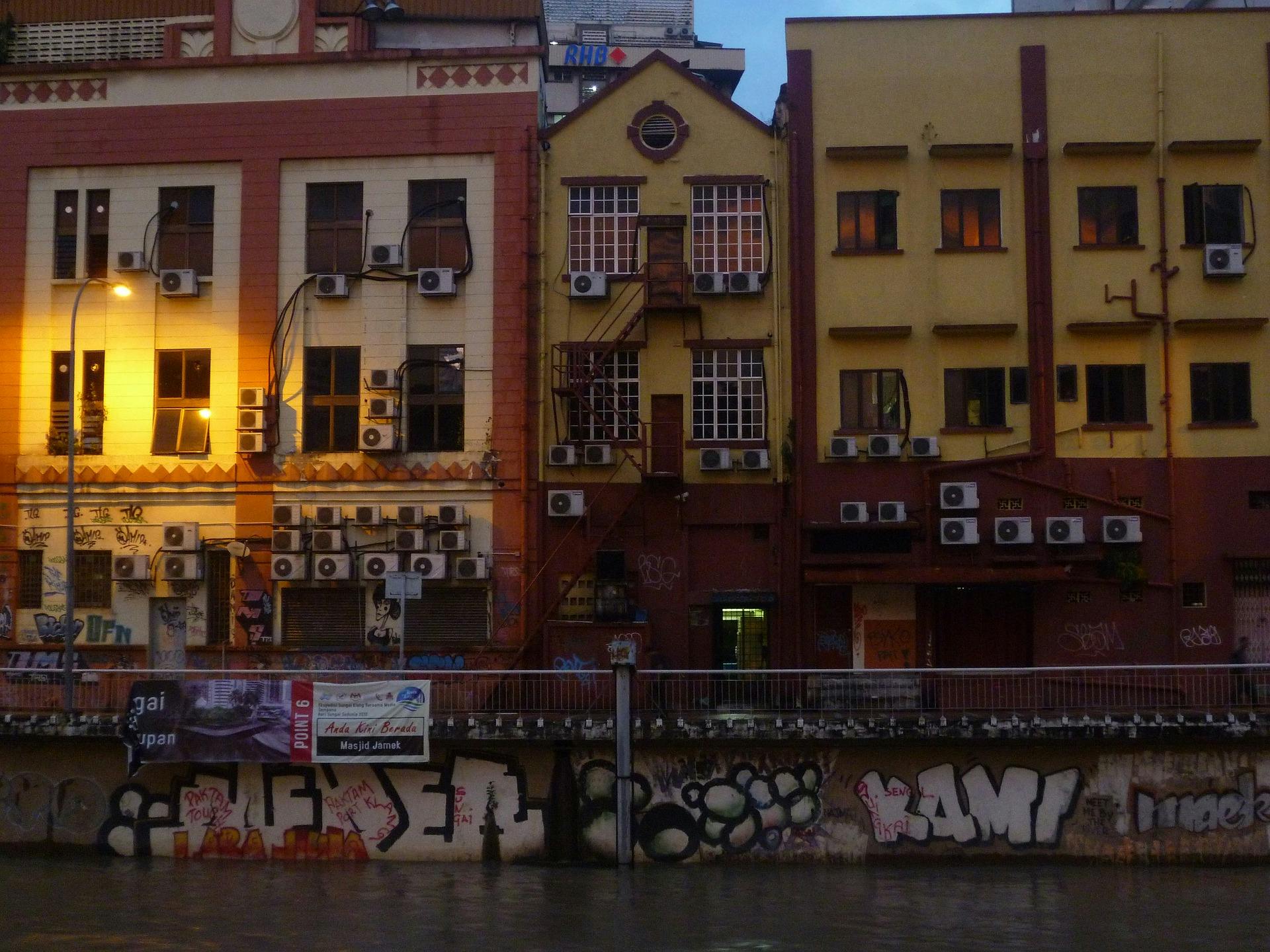
A history of residential and commercial air conditioning
Around 87% of American homes had air conditioning at the time of a 2009 report from the Energy Information Administration. That number is even higher now—2019 Census data says 91%. However, it certainly wasn’t always this way. Air conditioning is an early-20th-century luxury that has become an early-21st-century necessity in many people’s eyes.
American mansions and wealthier dwellings in the 18th and 19th centuries commonly had icehouses. Washington built one at Mount Vernon, for example. However, these icehouses were used to store ice through the summer to keep food cool and provide ice for desserts, not to cool homes or buildings. However, the concept of cooling residential areas was a 19th century proposition. In the 1840s, physician and inventor Dr. John Gorrie of Florida (makes sense) proposed the idea of cooling cities to relieve residents of what he called “the evils of high temperatures.” Dr. Gorrie felt that keeping cities and hospital patients cool was essential to prevent diseases like malaria, and he fashioned a rudimentary system for cooling hospital rooms using ice (in a similar principle to 19th-century iceboxes for keeping food cool), but this strategy required large quantities of ice to be shipped to Florida from frozen lakes and streams in the northern United States.
To get around this inconvenient and expensive problem, in 1851 Dr. Gorrie designed and patented a complicated ice-making machine, which could be powered by a horse, a water wheel, sails (like a windmill), or steam engine, to run an air compressor, and the heat absorption attained when releasing this compressed air would be harnessed to form blocks of ice. Despite successfully making artificially frozen ice as early as 1844 in his own experiments, Dr. Gorrie was unable to bring his ice-making invention to fruition due to financial difficulties. However, his invention laid the foundation for modern air conditioning and refrigeration, since both rely on the expansion and condensation of gases within a closed-loop system to regulate heat.
Another early pioneer in commercial air conditioning was Willis Carrier, an engineer who developed what many consider the first practical, modern electric air conditioning unit. In 1902 Carrier was asked to solve a humidity problem that was causing magazine pages to wrinkle and stick together at a publishing company in Brooklyn, New York. Carrier designed and patented his “Apparatus for Treating Air,” which used a system of coils that could either add humidity or dehumidify air by heating or cooling water. He also patented an automatic control system for regulating the humidity and temperature of air in textile mills.
Carrier soon recognized the potential benefits of humidity control and air conditioning for other industries, and he and six other engineers formed their own company, Carrier Engineering Corporation, and Carrier is still in business to this day.
In 1889, Alfred R. Wolff designed an ice-based, steam-powered ventilation system for Carnegie Hall to help cool its patrons. In 1899, Wolff designed a system for the dissecting room of Cornell Medical College that more closely resembled the principles behind modern air conditioning, utilizing a refrigeration unit that circulated a brine solution through pipes, over which air was blown. This is one of the earliest iterations of the concept behind the modern heat exchanger.
The New Yorker reports, “The first space that was cooled with modern air conditioning specifically for the comfort of sweaty people was the trading floor of the new building for the New York Stock Exchange, which opened in 1903. Designed by Wolff, it relied on three ammonia-absorption machines, each with a cooling capability equivalent to a hundred and fifty tons of ice. Like all early air-conditioning systems, it was meant for industrial use and deeply integrated into the architecture of the building. . . . Wolff, who became the leading air-conditioning engineer in New York City, installed just three residential systems in total—for the Vanderbilt, Carnegie, and Astor residences.”
These residences for the ultra-wealthy and famous American “royal families” were huge and were built more like industrial or commercial buildings, so most people don’t consider these to be examples of the types of residential A/C units that would start coming to light in the 1930s (see below).
Traders at the stock exchange and visitors to Carnegie Hall may have benefitted from early A/C systems, but the public at large didn’t get a glimpse of the cooler life until the St. Louis World's Fair in 1904, where organizers used mechanical refrigeration to cool 35,000 cubic feet of air per minute in the Missouri State Building, including the 1,000-seat auditorium and the rotunda. This marked one of the first times the American people were exposed to the concept of “comfort cooling.”
This concept was further realized in movie theaters in the 1920s, when the popularity of silver-screen stars and films exploded and Americans packed stuffy movie houses across the nation, which of course, due to the dark interior spaces required for film projection, couldn’t benefit from open windows and doors to provide ample air circulation. Early cooling systems were based on existing heating systems modified with refrigeration equipment and the air was typically distributed via floor vents (which makes sense for existing heated air systems), but this arrangement resulted in hot, muggy conditions in the mezzanine and upper levels of the theaters, with icy air remaining mostly near the floor. Some reports had moviegoers wrapping their feet with newspapers to keep them warm.
In 1922, Carrier Engineering Corporation installed the first ground-up cooling system for theaters at the Metropolitan Theater in Los Angeles, which pumped cool air through higher vents for better humidity and temperature control, and this resulted in comfortable air temperatures throughout the building, rather than just at the patrons’ feet.
In May 1922 at Rivoli Theater in New York, Carrier unveiled a new design for an air-conditioning system utilizing a centrifugal chiller (more about this later) with fewer moving parts and compressor stages than existing units. This pioneering design increased the reliability and lowered the cost of large-scale air conditioners, and helped popularize their use across the country.

The first practical home air conditioning units
So, we see that by the 1920s, large, expensive A/C units were being employed in some successful theaters and other large public buildings around the USA. But despite continual advancements in cooling technologies, more efficient designs, and reduced costs over the years, these commercial systems were still too large and expensive for the homes of regular people (the industrial systems installed in the Vanderbilt/Carnegie/Astor mansions notwithstanding). However, by the late 20s, things were starting to change.
Domestic refrigerators for keeping food cool started to gain popularity beginning in 1918 when William C. Durant introduced the first home refrigerator with a self-contained compressor. Taking this concept to a larger scale, Frigidaire introduced a new split-system room cooler to the marketplace in 1929. It was small enough for home use, and was shaped similarly to a radio cabinet, which was a very common piece of furniture at the time. However, the system was heavy, expensive, and required a separate, remotely controlled condensing unit. General Electric’s Frank Faust improved on this design, developing a self-contained room cooler, and GE ended up producing 32 similar prototypes from 1930 to 1931.
Several manufacturers offered split-system, console, and portable room air conditioners throughout the 1930s, but not many people could afford them and many rural homeowners didn’t see the need for them.
Home cooling systems got smaller after H.H. Schultz and J.Q. Sherman filed their patent for an air conditioning unit that could be placed on a window ledge. The units hit the market in 1932 but were not widely purchased initially due to their high cost.
Engineer Henry Galson went on to develop a more compact, inexpensive version of the window air conditioner and helped set up production lines for several prominent manufacturers in the 30s and 40s. Frigidaire began selling a window-mounted A/C unit in 1940. By 1947, 43,000 of these compact, window-mounted air conditioners had been sold, and it was clear that there was a demand for cooler air in the American home.
In the early 1950s, the first residential homes with central air conditioning were built, and in 1953, sales of window A/C units exceeded 1 million. By the late 1960s, most new homes had central air conditioning, and window air conditioners became more affordable than ever, which helped spur population growth in hot-weather states like Arizona, Florida, and much of California.
Today, most home buyers wouldn’t even consider buying a home unless it has central air, particularly in warmer states.
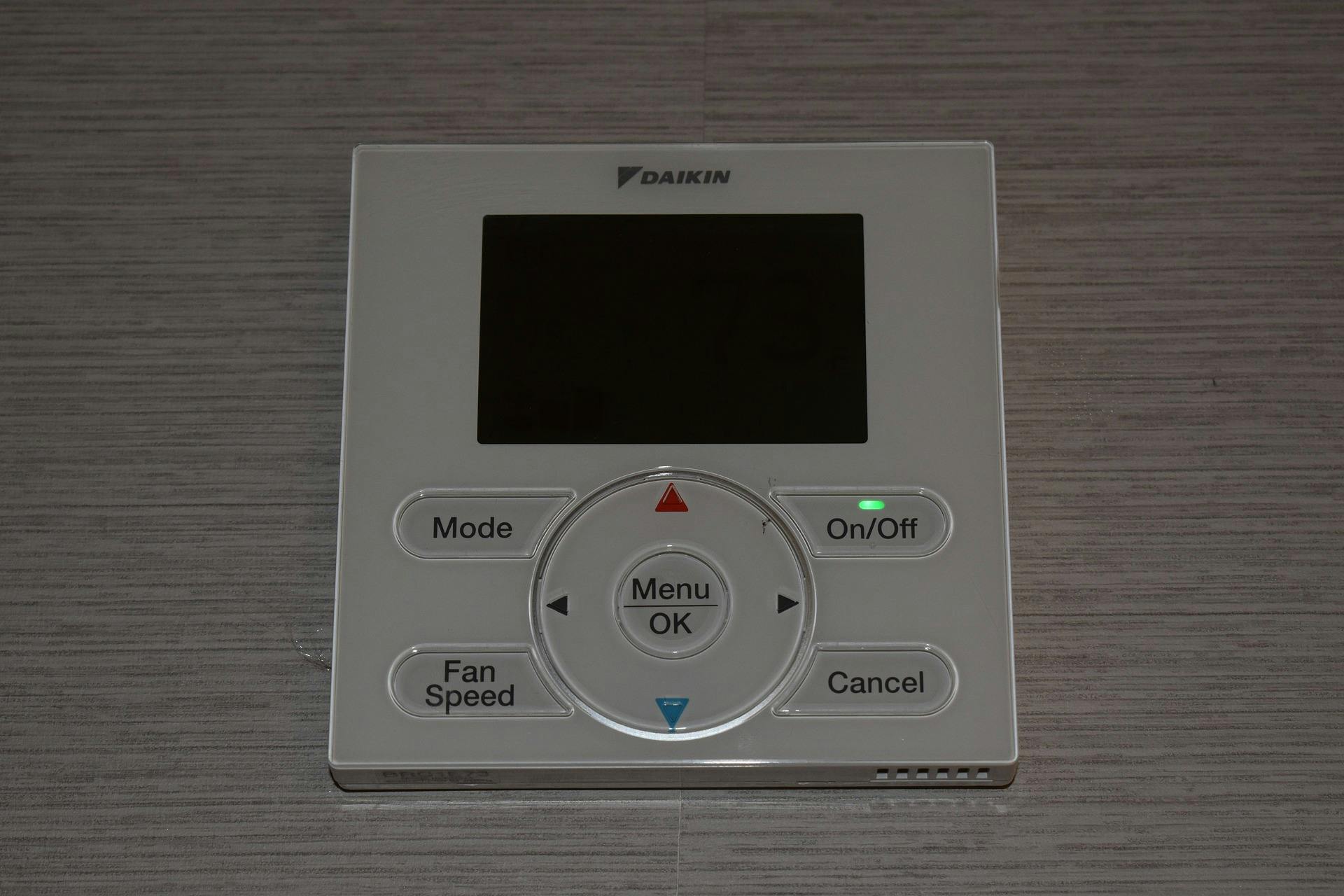
The growth in air conditioner use around the world
Between 1996 and 2016, worldwide sales of A/C units nearly quadrupled to 135 million units annually. By 2018, an estimated 1.6 billion air conditioning units were installed worldwide, with the International Energy Agency expecting this number to grow to 5.6 billion units by 2050. The United States has the largest installed A/C cooling output capacity in the world, and 50% of it is in the residential sector. Around 40% of the world’s cooling output capacity is in the US, but annual sales are now higher in China, with growing numbers coming from India, Indonesia, and the Middle East.
How do air conditioners work?
Barring some holdouts of water-evaporation or “swamp coolers” that can be effective in drier climates (but which have limited cooling capability, waste water, and come with the downside of significantly humidifying the air and creating a rooftop source of water leaks), the majority of air conditioners in use throughout the world today are based on vapor compression refrigeration cycle technology, which is the same system used in most refrigerators. These A/Cs exploit a basic law of physics stating that when a liquid converts to a gas (in a process called phase conversion), it absorbs heat; and when it condenses again (to a liquid), it releases heat. A/C units take advantage of this phase conversion by forcing chemical compounds called refrigerants to evaporate and condense repeatedly in a closed loop of (usually metal) coils.
Refrigerants are beneficial in these designs because they change state from liquid to gas at relatively low temperatures. Typically, a fan blows warmer air over the cold, low-pressure evaporator coils. The refrigerant inside the coils absorbs heat as it changes from a liquid to a gaseous state, cooling the air. To keep the cycle going and continue cooling more air, the A/C converts the refrigerant gas back to a liquid again through the use of a compressor which puts the gas under high pressure, releasing heat that must be sent outside the cooled area with an additional set of coils called condenser coils, and a second fan. This cools down the refrigerant gas in the coils, turning it back into a liquid, and the process starts all over again in a constant cycle, from liquid refrigerant, to a gas and heat absorption, to compression, and phase transition back to a liquid again.
Many A/C units can also provide heated air when desired
Depending on how they are set up, air conditioners primarily meant for cooling may also be used for heating purposes through the use of reversible heat pumps, which enable the refrigeration cycle to be reversed and provide heating instead of cooling. When the heat pump is in heating mode, the evaporator coil simply switches roles and becomes the condenser coil, producing heat, while the condenser unit acts as the evaporator, discharging cold air to the exterior space. Depending on climatic conditions, this setup can meet both heating and cooling needs, with the additional advantage that heat pumps are typically much more energy efficient than electric element-type space heaters and fossil fuel-based boilers.

What are the main types of air conditioners in use today, and who are the top companies?
In basic terms, there are three main categories of air conditioners used in residential and commercial buildings: 1. Stand-alone or portable units (sometimes called packaged, unitized, or unitary); 2. Split-system units; and 3. Chillers. Stand-alone air conditioners incorporate the condenser and evaporator in a single box or unit, moving hot air out of the building and cool air inside. Examples include the small window units that can cool a single room, hotel-type A/C units that sit under a window with a grilled opening passing through the wall connecting the condensing unit on the outside to the evaporative unit on the inside, and large rooftop units (sometimes called outdoor packaged units) that are capable of cooling an entire building via ducts (often as part of an overall HVAC, or Heating, Ventilation, and Air Conditioning system).
Split-system air conditioners are also found in small, single-room varieties as well as large systems capable of cooling entire groups of buildings. In all split systems, the condenser is located outside the building and is separated through piping that carries the refrigerant to the evaporator on the inside of the building. There are both ductless and ducted split system designs, and these are very common for most central residential and many commercial buildings.
Chillers are large A/C systems that utilize refrigerant condenser/compression/evaporation loops similar to the above designs, but the difference is that chillers produce chilled water (rather than chilled air directly) and distribute it throughout a building or cooling network through pipes to an indoor system that cools the air. Chillers can be either water-, air-, or evaporative-cooled, and are much more complicated than split-system or unitary A/C units. Compression cycle chillers can be centrifugal, reciprocating, or screw-driven. Chiller systems are commonly used in buildings with large cooling needs or where there is a concurrent need for both air conditioning and heating. Due to the additional “loop” of water or air cooling for the residual heat created by compression, chillers can be more efficient overall and reduce electrical loads. Here’s a good overview where you can learn more about how chillers work.
Top air conditioner / HVAC brands and companies in the US
For residential HVAC brands, US News and World Report’s top 10 list is a good place to start. Based on ratings, their list of the best HVAC companies includes:
- Carrier (remember them from the 1920s?)
- Bryant
- Goodman
- Lennox
- Trane
- Rheem
- American Standard
- York
- Frigidaire
- Amana
For commercial or industrial manufacturers, many of the above companies also show up as favorites of various HVAC installers and techs, but you also find companies like Nortek Global, Daikin, AAON, Cambridge, and Johnson Controls as top recommendations.
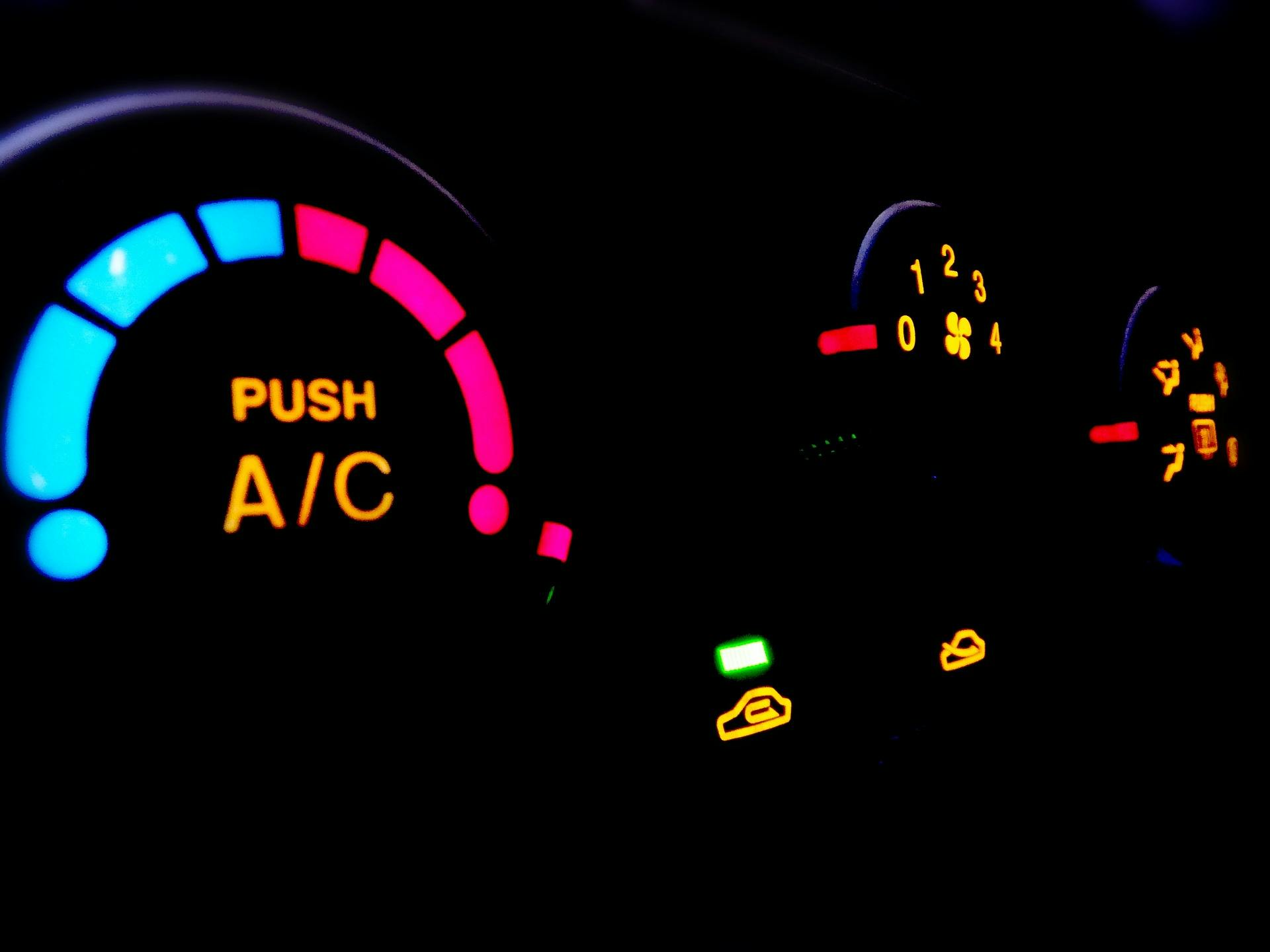
The history of air conditioning in cars, and who was the first?
Despite America’s love affair with the automobile, drivers had to wait until the 1940s to get air conditioning in their cars. Packard was the first to offer it in 1941, with Cadillac following shortly thereafter. However, as AAA Magazine reports, “As one could imagine, these early cooling systems were far from perfect. The unit was located in the trunk of the vehicle, forcing the driver to get out of the car and manually install or remove the drive belt from the compressor to turn the air conditioning on and off. Secondly, the system could only recirculate air already in the cabin, not incorporate outside air. When a smoker was onboard, the air quickly become (sic) unbearable. Furthermore, the condensed water running overhead was known to drip down on passengers. If that wasn’t enough, these first systems had no control settings – they were either on or off.”
JD Power points out the primary issue, though: “At a price of $274 (roughly $5,000 in today’s money), the unit was simply unaffordable to most people in Depression Era / pre-war America. Packard discontinued the option after 1941.”
Automobile A/C development was effectively put on hiatus due to WWII, but in the post-war boom and the development of the US car culture, it became more common and the technology got more practical and convenient. In 1953, Packard, General Motors, and Chrysler each offered new automobile A/C units, including much-improved systems that fit into the engine bay. It was still a somewhat pricey option, but the dollar was strong and cars were getting relatively inexpensive, and around 30,000 cars were sold that year with factory A/C. By 1956, every major US automobile maker offered air conditioning as an option.
Though only around 3,000 cars had been equipped with A/C before WWII, by the end of the ‘50s, that number had grown to 1 million. By the end of the 1960s, more than half of all new cars had factory air conditioning. Today, it’s almost impossible to buy a new car without A/C. Only 1% of cars don’t have it, according to Car and Driver.
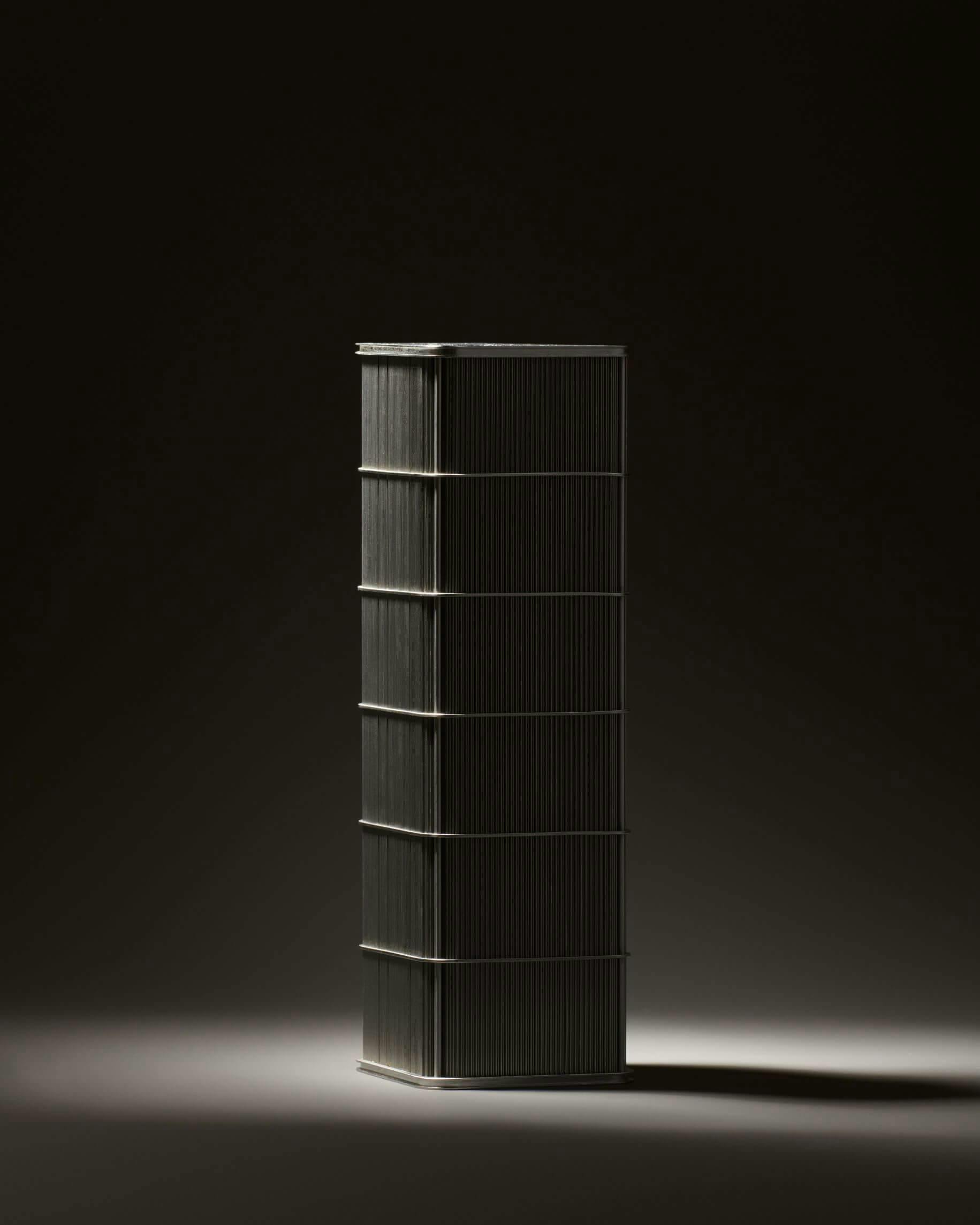
Environmental control systems and air conditioning in military and commercial aircraft
“Air conditioning” commonly refers to shedding heat and blowing or pumping cooler air into a room, building, or vehicle. In private airplanes, historically provisions for cooler cabin air were not prioritized, as ducted outside air could typically sufficiently cool the pilot and passengers. Moreover, even at common non-commercial flight altitudes of 5,000-11,000 feet, the air is much cooler than at ground level. For military airplanes, many service missions are flown at altitudes where the air is well below freezing, but still, modern military aircraft like the F-16, F/A-18, and F-35 have air conditioning systems to keep both the pilot and avionics cool while sitting on sunny flight decks and at lower altitudes. In addition to the engine bleed-air environmental control systems typical in modern fighter aircraft, liquid cooling, plate-fin, and the superior new microtube heat exchangers are often used to keep avionics, crucial components, and weapons systems cool in all kinds of aircraft and spacecraft.
Helicopters typically fly at lower, hotter elevations, and cabin A/C is an option on higher-end civilian choppers and all modern military rotary-winged aircraft. Interestingly, these A/C systems can be extremely loud, over 100 decibels in the case of the Apache, and efforts are being made to quieten them.
For modern commercial aircraft powered by turbine jet engines, air conditioning or environmental control is provided by the air conditioning pack, commonly called “the pack.” The pack has three primary functions in aircraft with pressurized cabins:
- Control fresh air flow for airplane pressurization and ventilation
- Control the flight compartment and passenger cabin temperature
- Recirculate cabin air for ventilation
The operation of the pack is complicated enough that it deserves its own article, but if you’re interested in the details of all of its functions, here’s a good overview.
The problem with chemical refrigerants and their environmental impact (R-12, R-22, R-142a, R-134a, R-410a)
Early A/C systems utilized flammable gases such as chloromethane and sometimes ammonia or sulphur dioxide in their condenser/evaporator coils, but starting in the late 1920s, Thomas Midgley, Albert Henne, and Robert McNary of General Motors built on the 1890s work of Belgian scientist Frédéric Swarts (who pioneered the synthesis of chlorofluorocarbons [CFCs]) and perfected the synthetic production of CFC coolants. CFCs became the world’s first non-flammable refrigerating fluids, which dramatically improved the safety of air conditioners.
CFCs quickly became widely used in aerosols, cooling systems, foam manufacturing, and fire retardants across multiple industries. The most common CFC used in A/C units became dichlorodifluoromethane (known as the DuPont trademark name Freon, Freon-12, or R-12). However, these “safe” refrigerants came with their own problems, as it was determined that widespread CFC use was contributing to damage to the Earth’s ozone layer, with potentially catastrophic environmental repercussions.
In 1987, the Montreal Protocol was signed, which is an international treaty intended to protect the ozone layer and phase out damaging chemicals. The manufacture of R-12 was banned in developed countries in 1996, and in developing countries in 2010. Today R-12 is only allowed as fire retardant in submarines and aircraft.
As CFCs began to be phased out, understandably, developed nations scrambled to find replacement chemicals that could perform similar tasks. Hydrochlorofluorocarbons, commonly known as HCFCs, are a group of man-made compounds containing hydrogen, chlorine, fluorine and carbon. Like CFCs, HCFCs are (or were) widely used in aerosol propellants, industrial manufacturing, and air conditioning. Unlike the CFCs, however, most HCFCs are broken down in the lowest part of the atmosphere and pose a much smaller risk to the ozone layer. Nevertheless, HCFCs are very potent greenhouse gases, and the use of HCFCs is also being phased out in favor of Hydrofluorocarbons (HFCs).
It’s often tough for A/C techs in the auto, residential, industrial, and aerospace markets to keep pace with the continually changing requirements, permissible refrigerants, and system designs. When one refrigerant is banned and another becomes “allowed” or the “replacement,” often that replacement is also eventually banned, sometimes within only a few years. For example, R-22 refrigerant, (also known as R-22 freon and HCFC-22 freon) is an HCFC that was intended to replace R-12, but has also been banned by the EPA as of January 1, 2020. As of that date, only recovered, recycled, or reclaimed supplies of R-22 will be available. The production (not use) of R-22 is being phased out by the Montreal Protocol. (For developed countries, reduction of HCFC consumption and production began in 2004 and 2010, respectively, with 100% reduction set for 2020. Developing countries agreed to start reducing consumption and production of HCFCs by 2015, with 100% reduction set for 2030.)
R-410A is an HFC refrigerant that was intended as a replacement or an upgrade to legacy Freon systems, but due to environmental concerns, US built refrigerators using R-410A refrigerant are banned as of January 1, 2021. HC-600a is currently the leading replacement refrigerant for new US built refrigerators. HC-600a is a blend of 50% isobutane (highly flammable) and 50% HFC-134a (non-flammable). So in some ways we are going backwards (towards flammable refrigerants again) in an effort to be kinder to the environment.
Can I replace R-22 with R-410A?
Another issue with these continual “replacements” is it requires the installation of completely new, often prohibitively expensive cooling systems in order to utilize the newest allowed refrigerants. However, in some cases you cannot just switch refrigerants. For example, because R410-A and R-22 have different chemical properties and R410-A operates at a higher pressure, if you put R410-A into an R-22 system, the parts will rupture. No bueno.
Currently, the leading replacement for R-410A refrigerant is a single component refrigerant called R-32, which has one-third the global warming potential of R‑410A. Originally the phase out of R-410A equipment was slated for January 1, 2023, but for many reasons that goal is not going to be reached. For most HVAC applications, the goal seems to be a ban on any refrigerant with a GWP (Global Warming Potential) greater than 750 by 2025.
These issues impact automobile makers as well. A common refrigerant in light vehicles is HFC-134a, but it will no longer be approved for use in new light-duty vehicles manufactured or sold in the United States as of model year 2021 as a result of the EPA’s July 2015 final rule under SNAP. These changes force manufacturers to pass the increased costs on to the consumer, and maintenance techs can have real trouble trying to find enough approved refrigerants to perform their jobs.
Tougher energy requirements combined with stricter environmental regulations make it difficult for air-conditioning companies
It’s a tough balancing act for air conditioning/HVAC companies to comply with global treaties and national laws requiring the cessation of use of the less expensive, more efficient refrigerants, while at the same time adhering to pressure to build more energy-efficient HVAC systems, but there have been significant improvements. Since 1992, the US Department of Energy has issued conservation standards for manufacturers of residential central air conditioners and heat pumps. The initial standard is expected to net about $29 billion in energy bill savings from 1993 to 2023. The Department says, “The standard passed in 2006 is anticipated to result in around $70 billion in energy bill savings from 2006 to 2035 and avoid more than 369 million metric tons of carbon dioxide emissions, equivalent to the annual greenhouse gas emissions of about 72 million cars. The program has already driven huge efficiency improvements in new air conditioning technology that has helped consumers save energy and money. In fact, new air conditioners today use about 50 percent less energy than they did in 1990.”
How big is the US air conditioning HVAC market?
Industrial, commercial, and residential HVAC (heating, ventilation, and air conditioning) is big business in the US, generating $16.5 billion in sales in 2021, with a projected compound annual growth rate of 5.6% to 2030, according to a report from Grand View Research. The report also specifies that cooling is, ahem, the hot ticket for the foreseeable future: “The cooling product segment dominated the market in 2021. The segment accounted for the largest share of more than 56.7% of the total revenue in the same year. The cooling segment is further projected to retain its dominant market position, expanding at the fastest growth rate during the forecast period. This product category largely comprises unitary ACs, split & packaged systems, portable ACs, and cooling towers.”
Socio-economic impacts of excessive heat/how does air conditioning affect the economy?
Heat kills more Americans every year than any natural disaster, but other than a few blurbs on the local weather if it gets really bad, not many people think about it. However, the economic impacts of too much heat are rising. One study from the Atlantic Council estimates the total economic loss from heat in the United States to be at least $100 billion annually—a figure that the council says will double by 2030 and quintuple by 2050 if we don’t reduce our greenhouse-gas emissions or adapt to the changing climate. By comparison, last year’s record-breaking US hurricane season caused an estimated $60-$65 billion in economic losses.
The study calculated economic loss by assessing how heat impacts worker productivity. This means time lost on the job when people have to slow down and/or take breaks to avoid overheating—and when it’s too hot for them to work at all. Naturally this is most influential on people who work outside, but it also impacts office workers, who find that they can’t think quite as clearly or work as efficiently on the days when the air conditioner can’t keep up with rising temperatures.
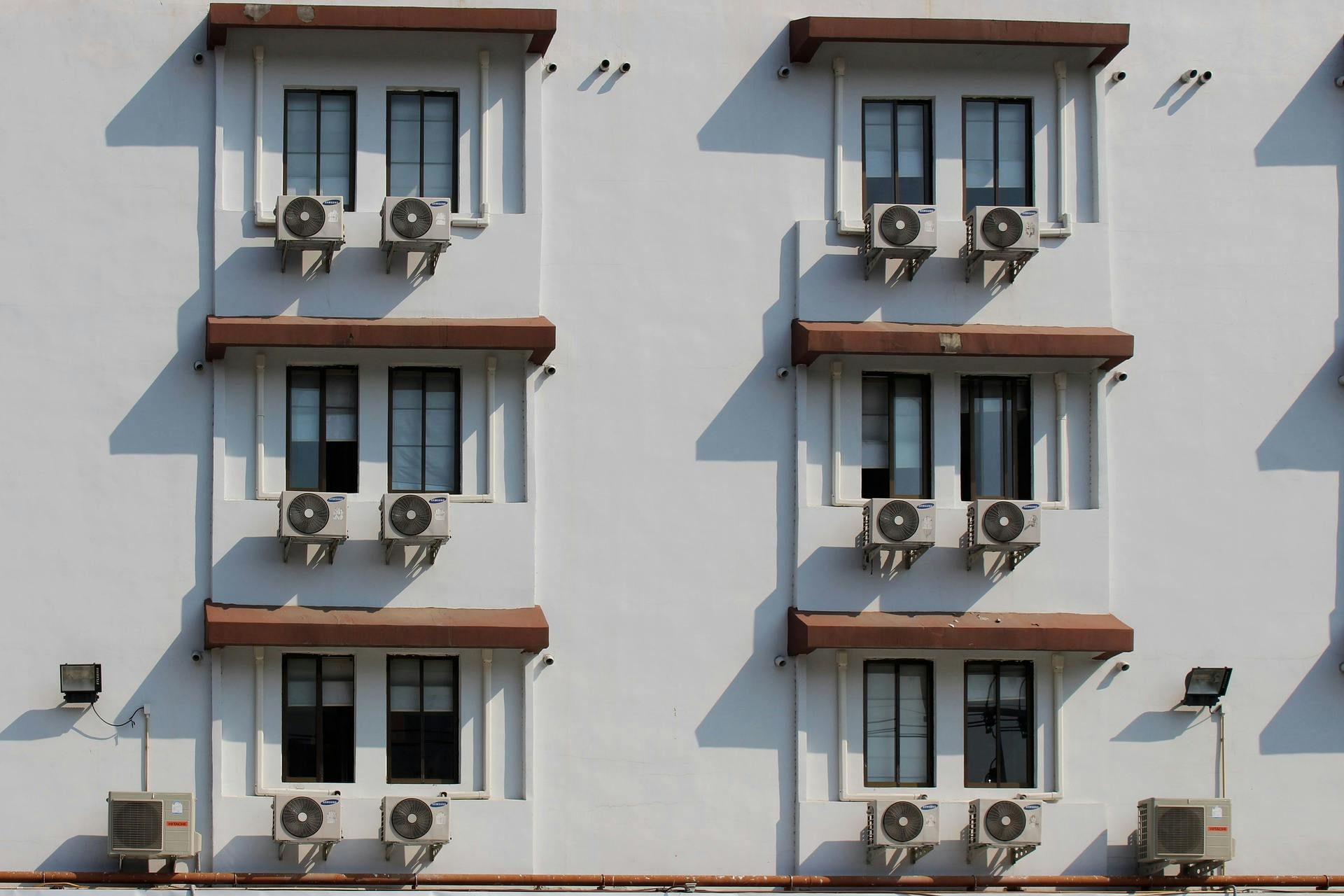
The looming global “cold crunch” and the need for more energy-efficient air conditioning systems
According to a report from the International Energy Agency (IEA), the growth in global demand for cooling living and working spaces is one of the most critical yet often overlooked energy issues of our time. As noted earlier, the IEA says the use of energy for cooling is growing faster than for any other end use in buildings, nearly quadrupling between 1990 and 2016. Global sales of A/Cs have been growing steadily. There are now about 1.6 billion A/C units in use, with over half in just two countries: China and the United States.
Those A/Cs vary enormously in energy efficiency, and keeping them running consumes over 2,000 terawatt hours (TWh) of electricity every year, which is two and a half times the total electricity use of Africa. Almost a fifth of all the electricity used in buildings globally is for cooling, and in some countries, such as in the Middle East and also parts of the United States, space cooling can represent more than 70% of peak residential electrical demand on extremely hot days.
Adding to the problem is that this growing demand for cooling is driven by economic and population growth in the hottest parts of the world. Global population growth is shifting south, to countries that experience higher temperatures, which further increases the demand for cooling. The IEA reports that the lion’s share of the projected growth in energy use for space cooling by 2050 comes from the emerging economies, with just three countries – India, China and Indonesia – contributing half of global cooling energy demand growth.
If left unchecked, the IEA says energy demand from air conditioners will more than triple by 2050, or an amount equal to China’s total electricity demand today.
So what can we do? The IEA says the answer lies first and foremost in improving the efficiency of air conditioners, which can quickly slow down the growth in cooling-related electricity demand. Indeed, the opportunity for efficient cooling lies in the market’s current inefficiencies: There are huge disparities in the efficiencies of air conditioners sold today across the globe. Policy interventions can have a significant and rapid global impact, but unless the technology keeps up with demand, history teaches us that people will generally care more about their sweaty, overheated children than the environment.
The IEA also proposes measures such as strong minimum energy performance standards that they say are proven to drive up equipment efficiencies quickly and cost-effectively. In the longer term, the underlying need for cooling can also be greatly reduced by better building design and tougher building codes, as well as by increased rates of energy efficiency improvements in existing buildings.
Like it or not, things are heating up, and it looks like keeping our cool might be more expensive, and more difficult, as time goes on. If tech companies can continue developing higher-efficiency heat exchangers and A/C systems, it can have a real impact on both the physical well-being of the public at large and these businesses’ bottom line.
–By Jeff Davis, Intergalactic Scribe
Sources:
https://www.energy.gov/articles/history-air-conditioning
https://www.eia.gov/todayinenergy/detail.php?id=10271&src
https://www.epa.gov/mvac/refrigerant-transition-environmental-impacts
https://www.grandviewresearch.com/industry-analysis/us-hvac-systems-market
https://www.linquip.com/blog/top-manufacturers-of-hvac-equipment/